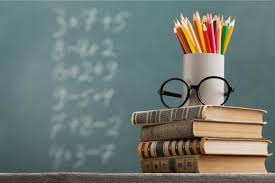Education has been provided for the purpose of human capital formation and human resource development by societies for centuries. Human capital is termed as the abilities, knowledge learned through education, improved capabilities of individuals, and promise for livelihood earnings to people. Education has the potential to increase the productive ability of individuals.
Education can also justify the grandiose agglomeration of government earning mechanism that can be understood as government net income, achieving taxation targets, the state’s financial and funding interventions in public affairs, and making pathways for better policy recommendations and implementations in due time and given a budget to prosper the economic and social lives of the citizenry.
The rate of returns is associated with education and defined as the value of lifetime productivity and socio-financial earnings of individuals. Academic studies and observations of educated people report that there is a positive relationship between years of schooling and earnings, thus justifying public and private investments in education and educational policy designing of the states for its citizens.
The national education policies and public spending on educating people are justified on the basis of two types of returns to education in any society or state. These are private and social returns to education. Private return to education consists of the student`s degree, diploma, life expectancy with better health, job, and opportunity for getting better careers with time and experience. One of the reports of the World Bank empirically shows that the rates of returns to primary education are 20 percent, a secondary level of education is 14 percent, and a tertiary level of education is 11 percent to individuals in their earnings across the globe. For Pakistan, an additional year of schooling increases the average rate of return up to 7 percent for individuals across national labour markets.
The major obstacles in the education system of Pakistan are low enrollment ratio, poverty-driven out-of-school children, higher dropout ratios, and some of the teaching quality issues in most of the rural areas of Pakistan. The national literacy rate in 1981 was 25.73 percent and is currently reported 62.3 percent by the end of the year, 2021. Therefore, a comprehensive strategy is of dire need to strengthen the education system of Pakistan
The social return to education means that society gets to progress, understanding civic roles, rational decision making, making responsible citizens, learning norms, social and religious harmony, a decrease of crime rates, and public knowledge to expose the power of ballot for creating democratic societies. It is well evident that political decision-making became prosperous in educated societies and states across the globe since the dawn of human civilization.
The Constitution of Pakistan provides free and compulsory education and its access to all the national population from age 5 to 16 years. In addition, education is one of the most effective keys by which a nation uplifts its socio-economic fronts to development. That is why, parents that invest more and optimally for their children’s education result in better prospects of long-term job creation, employment opportunities, personal, business development, and civic sense development among children. Education is directly contributing to national causes of integrity and development, sense of responsibility in citizens, and many other social benefits that ultimately contribute to the progress of a nation.
More investment in education is likely to create knowledge creation in multiple fields of science and technologies, innovation, and providing technical and vocational skills to the youth bulge that may spill over into higher productivity in almost all the fields of national life of Pakistan. Different economists and researchers have used various parameters and indicators to measure multiple aspects of such returns to education. The most common is the years of schooling, experience after schooling, the levels of vocational skills, technical capabilities, innovation and creativity indicators, quality of education, and the level of schooling, to mention a few. Quantifying indirect returns to education is a challenge to measure yet faced by social scientists. Similarly, the payoff matrix of education varies across individuals and fields of sciences and labour market responses across the globe.
The studies conducted in the past in this regard, have indicated parameters to bring fluctuations in returns are class size, teacher quality, school quality, student-teacher-parents collaboration mechanism, classroom attendance, teacher attendance, and the resources allocated for education purposes. All these parameters are the constituting components of any education policy.
The national education policy perspectives must ensure access to quality education for all, development of a unified national curriculum for national cohesion, encompassing the R&D requirements for knowledge generation in all fields of sciences and arts, prioritising national objectives, through investing in education, increasing productivity and human capital formation of the labor force, human resource development in every field, provision of technical and vocational skills, promotions of science and technologies.
A public-private partnership for educating the youth bulge, sufficient funds allocated for education, dissemination of national harmonization policies through education, collaboration with international educational institutions, and encompassing the Constitutional requirements for providing educational access and quality to all the segments of Pakistani society.
The major obstacles in the education system of Pakistan are low enrollment ratio, poverty-driven out-of-school children, higher dropout ratios, and some of the teaching quality issues in most of the rural areas of Pakistan. The national literacy rate in 1981 was 25.73 percent and is currently reported 62.3 percent by the end of the year, 2021. Therefore, a comprehensive strategy is of dire need to strengthen the education system of Pakistan.























